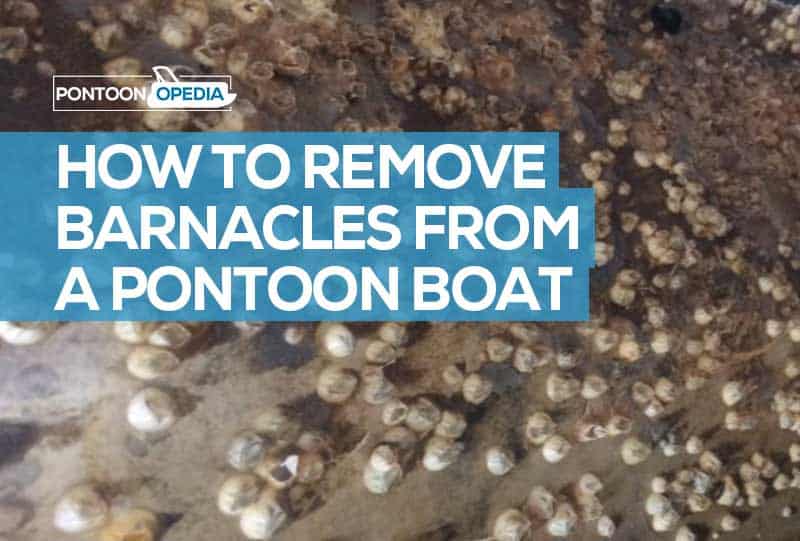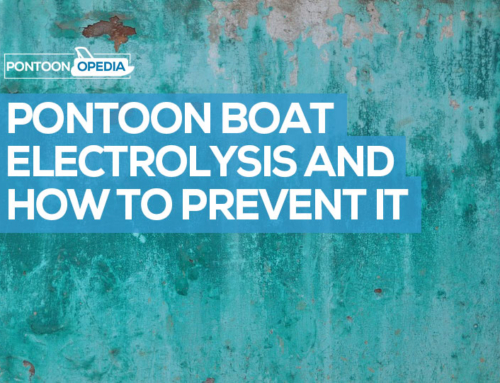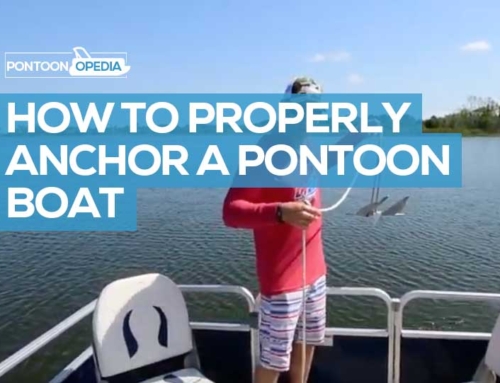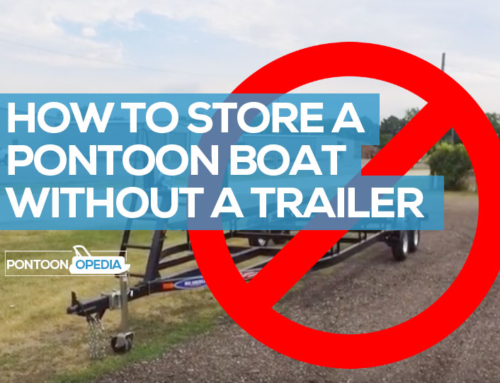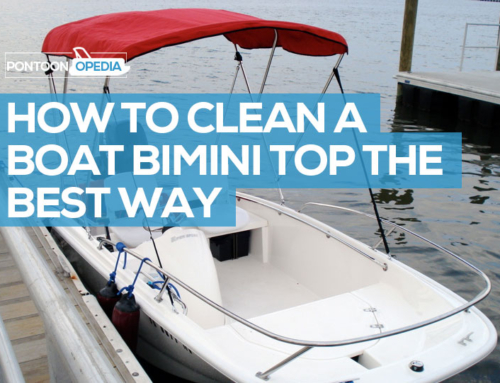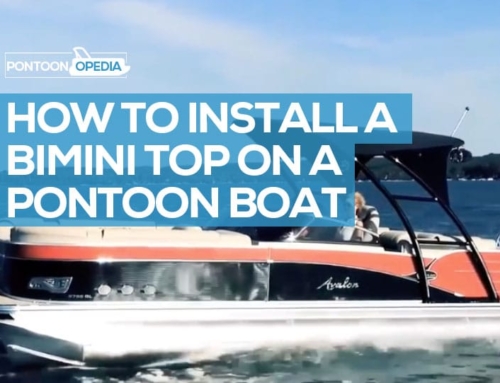If you use your pontoon boat in a salt water environment, barnacles are an absolute nightmare. It’s not just how they look, they can also reduce the performance of your pontoon boat, meaning you use more fuel and spend more money.
So, you need to remove the barnacles from your aluminum pontoon effectively. You also need to take steps to ensure that they don’t come back.
But how do you remove barnacles from a pontoon boat?
I decided to ask a good friend of mine who keeps his pontoon boat in salt water to develop a short guide to getting rid of them… and not just the barnacles themselves, but also that horrible glue residue ring mark that they leave behind.
Here’s how he does it and helps prevent it in the future.
How to get rid of barnacles on aluminum pontoons
If you’ve just taken your boat out of the water and have the horror of a barnacle infestation, don’t fret. You can remove them, and get rid of them, and take steps to prevent it happening again.
You will need:
- Heavy duty plastic scraper (not a metal one)
- Plastic paint edgers
- Protective glasses or goggles
- Pressure washer (view on Amazon)
- Toon Brite aluminum cleaner (view on Amazon)
- Alumabrite for a great polished finish (view on Amazon)
- Shark Hide sealant and protectant (view on Amazon)
1. Take the pontoon boat out of the water
For the best results, you need to get your boat out of the water. By doing so, the barnacles will dry out die off, and it’s going to make scraping them and their glue residue a whole lot easier.
But barnacles can live for quite a long time out of water, some surviving for up to 6 weeks.
I am assuming you don’t want to wait that long, so I suggest giving the pontoon boat barnacles about 5 to 7 days to dry out as much as they can.
At the very least, this should mean that at least some of them die, and it’s going to be a lot easier to remove them in the next step.
2. Loosen up the barnacles with Toon Brite (optional)
This next step is optional, but other pontoon boat owners swear by it.
Spray Toon Brite onto the barnacles and leave it to work in for about an hour. This should help to soften the barnacles up, making them a lot easier to scrape and wash off.
3. Power wash or scrape the barnacles away
There are two methods here. You can either use a power washer, or just go for the scraping method. You are still going to do some scraping in the next step, but what I would say is this; scraping is really hard work!
That’s how a pressure washer can help; spray at the barnacles at an angle as you can get a direct hit underneath their edge to make them come loose.
I recommend you wear some form of eye protection, as barnacles will fly off at all angles, and can cut your eyes if you’re not careful.
Once you have got rid of most of the barnacles from your aluminum pontoons, you can start to scrape the rest of them away using paint scrapers.
If you don’t have a pressure washer, then all you can do is scrape.
I suggest you use plastic scrapers, as these won’t damage your aluminum.
I like to use the thin paint edging tools too, as they will bend around the natural shape of your tubes. You can then use a normal plastic scraper that’s a bit heavier duty on the harder to shift barnacles.
4. Wash down with Toon Brite and scrape again
Once you’re happy with the number of barnacles you’ve managed to remove (I never get it quite perfect) you can use a few applications of Toon Brite to apply to the remaining ring marks.
Spray it on, leave for 30 minutes, and then use your scrapers again.
Without more scraping, the barnacle glue rings will stay there.
Once finished, don’t let the Toon Brite dry, as it can cause streaking so power wash any residue away.
Whilst the rings won’t impact your pontoon’s performance, it will look unsightly, so this step is purely for cosmetic reasons. You can skip it if you want.
5. Take a gun to a water pistol fight
I have successfully got rid of most of the rings with a little more scraping and the Toon Brite solution. This almost removes around 80% of the marks. It’s hard work but can nearly get you there.
Barnacles rings are very tough though, and in some cases, you might even have to use something like muriatic acid to get any remaining marks away.
I guess it all depends on how fastidious you are and what type of finish you want.
Other boat owners I know will even use an orbital sander with 40 to 60 grit paper. But if you choose to use a sander be really cautious when you get down to the metal!
6. Polish up and protect the aluminum pontoons
And last but not least, how to get a great finish.
You might see some oxidization and discoloration on the aluminum. Other boat owners suggest using a good coating of Alumabrite as well to give the tubes a great shine.
To then apply a protective layer to the aluminum, look at Shark Hide protectant.
Just make sure that your pontoon aluminum is free of any grease, dirt, or oil before you apply it.
For a 24-foot pontoon boat, I recommend you use a couple of bottles.
How to prevent barnacles from coming back
There is no guaranteed way that you can stop barnacles attaching to your pontoon in the future, but you can make their job a lot harder.
Something like the Aurora VS721 bottom protectant will help to prevent the barnacles sticking on in the future, plus could make them easier to get rid of next time.
It’s said to reduce the amount of marine growth (including algae) that attaches to the bottom of the pontoons.
Why are barnacles bad for pontoon boats?
The proper term for barnacles attaching themselves to your boat is biofouling. They are the scourge of boat owners the world over.
They will lead to a severe decrease in boat performance and fuel efficiency, and mean you will end up spending more on fuel. That’s not just bad for your wallet, but also the environment.
Did you know? The U.S. Naval Academy published research to suggest that biofouling is responsible for enough hull-drag to add $250 million dollars annually to the Navy’s gas bill.
Tests show that on planing powerboats, just a little bit of barnacle build-up or biofouling can reduce your boat’s speed by up to five knots and increase gas consumption by 30%.
How do barnacles effect pontoon boat speed?
I saw a post on social media from a pontoon boat owner who had this real-world example of how barnacles can affect the top speed of his boat. Here’s what he said:
“I have a 2005 Crest Sport with a Mercury 90 motor. I was only getting between 8 and 12 miles per hour out of her. I took my pontoon out of the slip and ended up scraping 110 pounds of barnacles off the bottom. Once back in the water I was able to hit 25 miles per hour again!”
Can you clean barnacles without taking the pontoon out of the water?
Believe it or not, you can get some barnacles off your pontoon boat without taking it out of the water, but the results won’t be as good.
Pressure washers do actually work under the water (just the nozzle not the electrics!) or you can use a heavy-duty brush to knock them off.
I don’t advise though, but it’s a last option if you can’t get your pontoon out of the water (here’s how you can do it without a trailer).
What other pontooners say
I didn’t want to leave you just with the advice of my pal – although I trust him implicitly to give great advice – so asked some other boat owners.
Here’s a few of the best comments from them about removing and preventing barnacles on a pontoon boat.
“Just let them dry out and then use a paint scraper. It’s nice and easy and I do it all the time. I used to do it in the water, but it’s better to do it when dry. Let them dry out first and die off. Once done, they should come off easily with a light scrape and scrub. You can even use a kitchen sink sponge.”
“I recommend a 2 or 3 inch metal paint scraper. It’s very easy to do once the barnacles dry out. I removed the barnacles from my own 20-foot pontoon boat in around 5 minutes using this method and the results were acceptable.”
“I use a plastic scraper so not to scratch the aluminum, but only after killing them off with acid. Honesty, it’s no fun at all scraping those suckers off! If any are left, I then use a light sandpaper to get rid of any remaining barnacles.”
“Don’t bother with acid, it’s dangerous to use, and just gives you more hassle. Instead scrape the barnacles off the pontoons then go back after it’s dry and finish off with a palm sander. Then next year apply some bottom paint. The extra money you lose on fuel due to this could like have covered the cost of the expensive paint.”
“The method we used was to scrape the barnacles off with a plastic scraper after applying some bleach to them. To clean everything up, I then used a cheap pressure washer.”
“I’ve never had to deal with barnacles on my aluminum pontoons as boat in fresh water but have used plastic paint edgers to remove algae. You can bend the thin paint edgers to the shape of your pontoon tube or use more rigid ones for the tough spots.”
The last word…
I hope you’ve enjoyed this contribution from my buddy on how he removes barnacles from his pontoon boat.
If you have any better methods, I would love to hear from you!
You might also be interested in these other pontoon boat cleaning guides:

